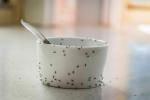
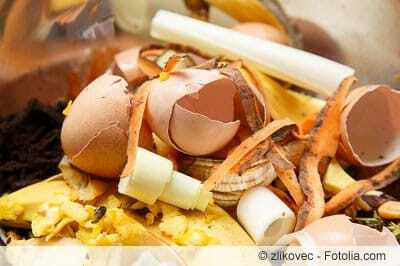
Table of contents
- That's what the proponents argue
- The contra arguments
- Rapid dissolution only in vinegar and hydrochloric acid
- As a fertilizer for plants on the decline
- Alternatives to eggshells as fertilizer
- Lime-intolerant plants
- Editor's conclusion
- Worth knowing about eggshells as fertilizer
Egg shells are among the uncooked kitchen leftovers and therefore belong on the compost!? Unfortunately the situation is not as simple as that. In fact, the shell is 90 percent calcium carbonate — known as carbonate of lime. Lime has a wide range of uses in the hobby garden, for example on compost or as a fertilizer for plants. The problem is that lime does not dissolve easily in this form. Are chicken egg shells helpful or even harmful? The following pro and con arguments are used to help you decide.
That's what the proponents argue
The extensive positive influences of compost on plant growth and soil quality have long been internalized by nature-loving hobby gardeners. Even the smallest garden today has a compost heap that is carefully filled with plant waste and uncooked kitchen leftovers. For decades, egg shells have also been composted without much ado for the following reasons:
- Egg shells contain valuable lime, an indispensable component of organic fertilizer
- a maximum of 0.5 millimeters thick, when crushed they promote the circulation of oxygen in the compost heap
- Calcium carbonate as the main ingredient neutralizes the acidifying effect of other additives, such as ground coffee
- the carbon contained prevents excessive nitrogen formation and thus ensures stable humus development
Regarding concerns about germs on egg shells, advocates of composting point to the rotting process. A freshly created compost heap starts with a hot phase, with temperatures of 60 °C and more being reached. In this stage, the organic material is broken down, whereby the germs do not survive this hygienization. Bacteria are also destroyed from a temperature of 70 °C. The advancing microorganisms ultimately find a biologically 'cleaned' material.
Tip:
In a thermal composter, the high temperatures are permanently maintained during the summer, which intensifies the sanitizing effect. The composting process is significantly accelerated.
The contra arguments

Within the large community of committed hobby gardeners, a faction is increasingly establishing itself that advocates putting eggshells in the organic waste and not in the compost. Your proof in detail:
- the shells of chicken eggs are not an organic matter, but rather a mineral composition
- Soil creatures avoid the crystalline solid instead of at least nibbling on it
- instead, eggshells undergo weathering processes similar to limestone
- as crushed splinters, they only disappear from view visually due to the brown discoloration
- Poultry egg shells are infected with Salmonella that survive hot rotting
- the bacteria are distributed with the compost in the garden and end up in the food
- Flies pick up the salmonella from the organic material and transport it to the kitchen
With regard to the sanitizing effect in the thermocomposter, the opponents of eggshells as Compost her conviction: What is the point of permanent components that do not decompose anyway? Sooner or later they will be screened out and end up in the bio bin.
Rapid dissolution only in vinegar and hydrochloric acid
Calcium carbonate is constructed so robustly that it only dissolves quickly when vinegar or hydrochloric acid come into play. A popular experiment in schools investigates how to peel a raw egg. For this purpose, a commercially available, uncooked poultry egg is placed in a glass with vinegar essence. Within a short time, bubbles form and foam develops on the surface of the liquid. Overnight the eggshell completely dissolves while the egg itself remains intact and has turned into a 'gummy' egg.
As a fertilizer for plants on the decline
The topic of eggshells as compost leads seamlessly to the question of their basic function as fertilizer for plants. Even our grandparents and great-grandparents mixed the shells into the irrigation water or worked them into the bed soil; firmly convinced that their plants received an extra dose of lime. However, our ancestors lacked evidence. When modern methods were used to take a closer look, the problem of the low solubility of calcium carbonate became apparent. Since the general lime content of the tap water has increased significantly in the meantime, preserved most garden plants have an adequate supply of it - whether eggshells are supplied or not.

Alternatives to eggshells as fertilizer
In view of the sluggish solubility of the calcareous component, effective alternatives for the fertilization of calcareous plants are used. As experience has shown, the garden soils in German hobby gardens are usually well supplied with lime. If a pH soil test reveals that the value drops too much in the acidic direction, countermeasures are required. This is especially true when cultivating plants that prefer neutral to alkaline soil. These include, for example, forsythia, gladioli, daffodils, peonies and tulips in the ornamental garden, as well as carrots, parsley, chard and some types of cabbage in the kitchen garden. How to proceed with liming:
- classic garden lime is suitable for light to medium soils
- Ideally apply garden lime in autumn or winter
- on light sandy soil, the application of lime marl with 30 percent clay is advisable
- Lime marl is spread in autumn because of its slow action
- if an additional nutrient supply with magnesium, manganese or boron is desired, algae lime is an option
- Algae lime is administered throughout the growing season
Rock dust has a special position. It contains plenty of carbonate of lime, as well as magnesium or potassium. However, the nutrients have to take a detour via the microorganisms so that they are available to the plants. Then, however, the positive effects – depending on the source rock – can hardly be topped. For example, earthworms and other soil creatures are activated, which promotes the formation of humus.
Tip:
If you repeatedly add rock flour to the compost heap, under normal conditions immediate liming of the bed soil is not necessary.
Lime-intolerant plants
Lime or eggshell fertilization is not always indicated. Various ornamental and useful plants only thrive optimally if they are cultivated in lime-poor to acidic soil. The best-known representatives are:
- rhododendron
- hydrangeas
- petunias
- azaleas
- orchids
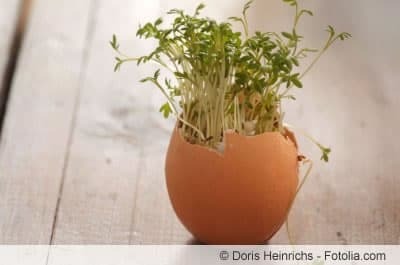
Various varieties of these genera are so sensitive to lime that they should preferably be watered with collected rainwater because tap water is too hard.
Editor's conclusion
The question of the usefulness of eggshells as compost and fertilizer for plants is still a matter of controversy. Both sides throw convincing and less conclusive arguments into the balance. Certainly, the sluggish solubility of calcium carbonate in chicken egg shells makes it unnecessary to add it to irrigation water as fertilizer. All other pros and cons arguments either lack a scientifically founded basis or simply lack empirical values. The answer to using the shells of poultry eggs in the allotment garden is therefore more of an individual attitude.
Worth knowing about eggshells as fertilizer
In most cases, our grandparents used raw egg shells for fertilization. They either put the shells in the irrigation water or they chopped them up and then mixed them into the ground. This trick is still widely recommended today. The eggshells contain calcium carbonate.
- Basically, nowadays there is hardly any point in providing additional lime in the soil in this way.
- In many areas of our country, the tap water is already quite calcareous. In this way, all plants are supplied with enough lime.
- Very few plants require an additional lime supply.
- On the contrary, for many of them too much lime or lime in general is rather harmful.
- If you have a lime-free soil and also quite soft water, you can use egg shells to introduce lime.
- However, the eggshells that accumulate in a normal four-person household are usually only sufficient for small areas or for flowerpots.
- It takes a lot of eggshells to fertilize an entire garden. In addition, it still remains a one-sided fertilizer.
- In addition, it takes some time before the shells start to decompose. The effect does not set in so quickly.
Which plants do not like lime?
- Rhododendrons, azaleas, heather, iris and all ericaceous plants.
- Also blueberries, cranberries, cloudberries (Gaultheria).
- royal fern, gorse, juniper (Juniperus communis).
- bird cherries (Prunus padus), mountain ash and pine.
- Likewise peaches, wine, magnolias, sweet chestnuts.
Which plants love lime?
- Christmas roses, early spring cyclamen, daphne.
- Winter lice, pasque flowers, liverworts, lilacs.
- Mock orange, chives, lavender, outdoor hibiscus.
- delphinium, carnations, geraniums, bluebells and many more.
- Beans and peas in particular are happy about a little extra lime in the soil.
Pros and cons
Opinions differ on whether to put eggshells in the compost, depending on the latest scientific findings. In general it is no longer recommended as flies can transfer the salmonella from the compost to open food in the kitchen. Adding eggshells to the compost gives them plenty of time to slowly decompose and release their nutrients. The shells should be crushed well beforehand. The smaller the pieces, the better. Also, the shells should not be open on the top compost heap lie, but be covered (flies).
 garden editorial
garden editorial I write about everything that interests me in my garden.
Learn more about fertilizer

Lawn lime: Lime against moss in the lawn
As soon as moss appears in the lawn, many a hobby gardener becomes restless - because soon the moss carpet can take over entire areas. With lawn lime, however, the unwelcome visitor can be skilfully put in his place.

Build your own Bokashi bucket | DIY instructions
Most of the kitchen waste goes on the compost or in the organic bin to add it back to nature's cycle. But there is a way to gain valuable fertilizer beforehand. We show how easy it is to build a Bokashi bucket and use it to obtain liquid fertilizer on the balcony or even in the apartment.
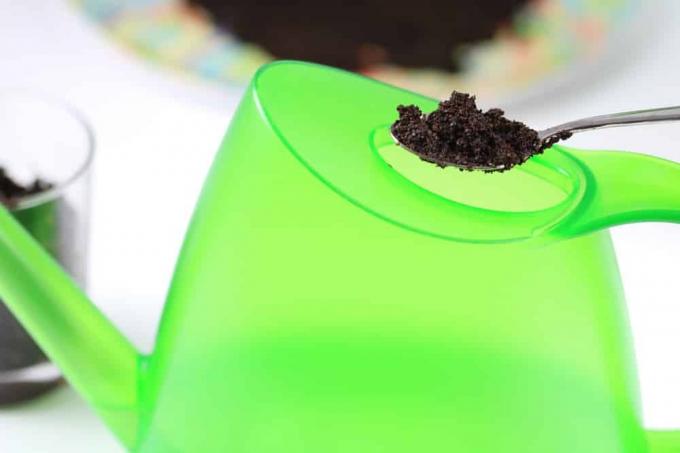
These 8 plants don't like coffee grounds as fertilizer
Hobby gardeners swear by the effect of the coffee grounds. It is fertilizer, snail protection, soil conditioner and cat deterrent all at the same time. In addition, it is free of charge and occurs daily in the household. Most plants are strengthened, but some are sensitive to the addition of coffee. We clarify.

Fertilize Christmas roses properly: 11 effective home remedies
Christmas roses are special flowers because, unlike almost all other perennials, they bloom in winter. They are insensitive and frost-hardy, and they can also multiply independently. Here you can find out what needs to be considered when fertilizing.
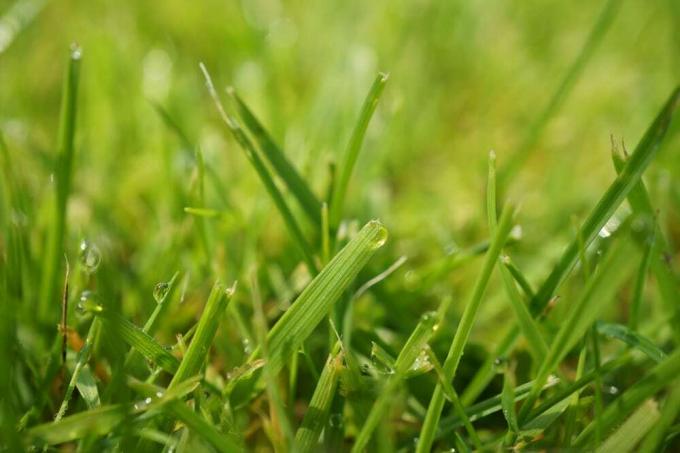
Lawn Bokashi: 6 steps to a cheap & natural fertilizer
The name Bokashi is still largely unknown. This method of using grass clippings comes from Japan. With a little preparation and a special form of processing, the clippings become valuable, nutrient-rich fertilizer that can be easily distributed in the garden.

Wood ash as fertilizer | These 70 plants love barbecue and charcoal
Home gardeners with a fireplace or tiled stove receive a natural fertilizer for free. Charcoal and charcoal leave behind a dusty residue that is packed with valuable nutrients. Read here under what conditions wood ash is suitable as a fertilizer. These 70 plants benefit from the unorthodox nutrient supply.

